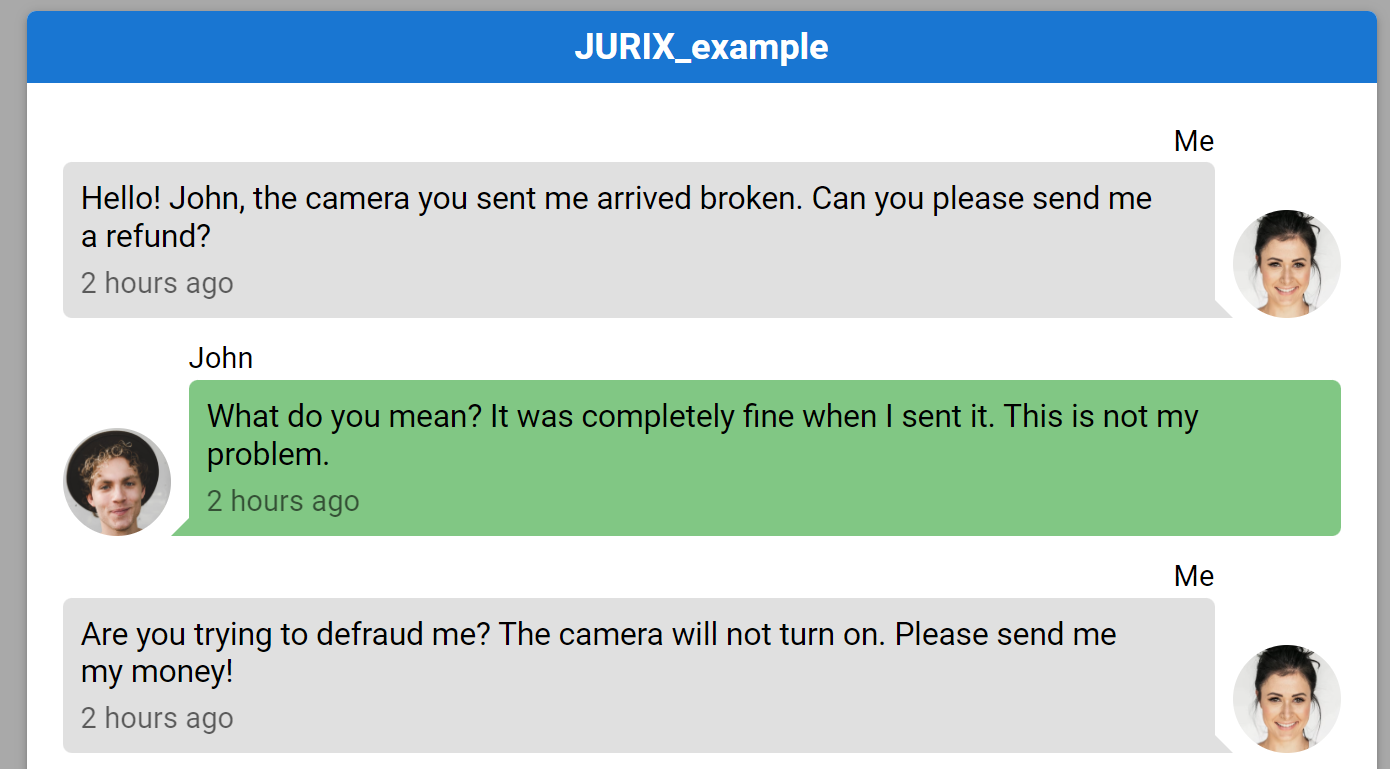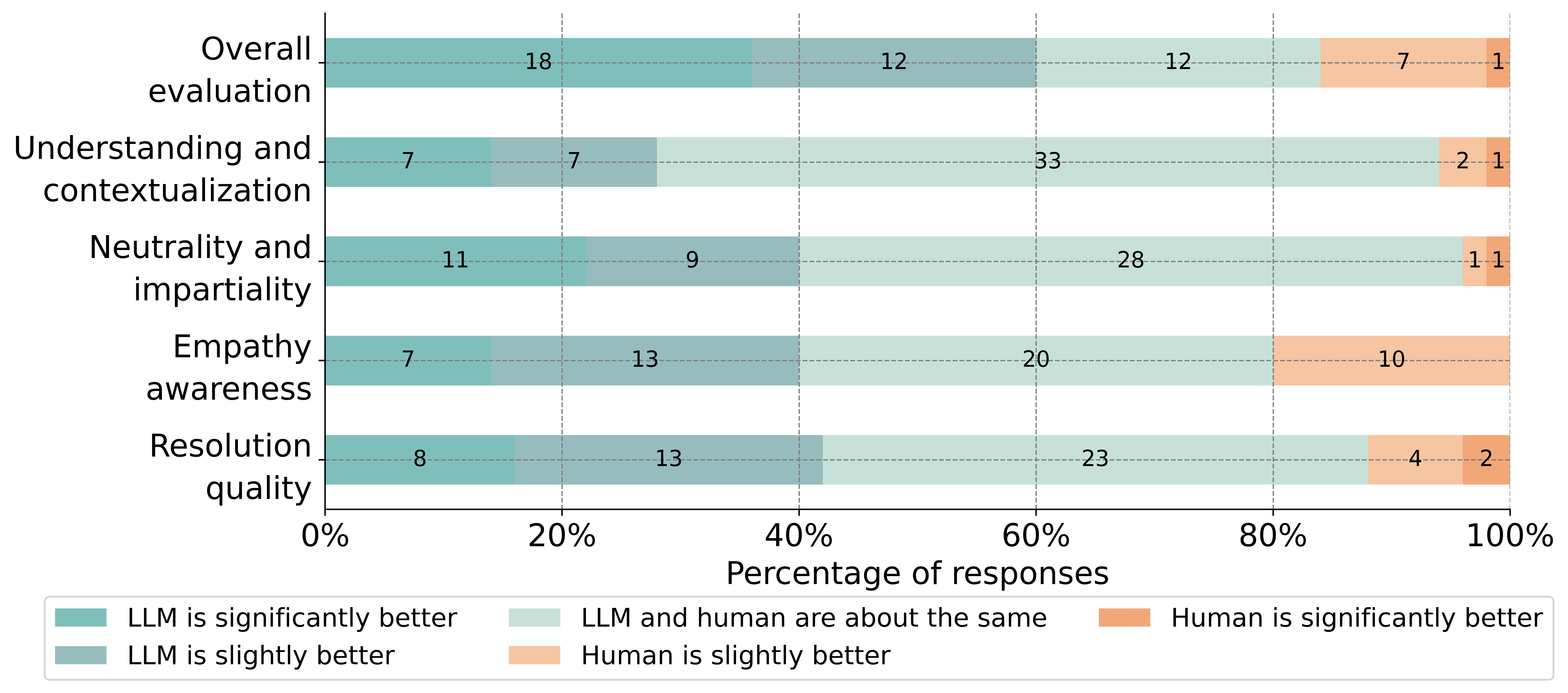- The paper demonstrates that LLMs achieve 62% superior or equivalent intervention type selection compared to human mediators.
- The paper shows that LLM-generated messages are rated 84% as good or better than those from humans, indicating high clarity and empathy.
- The paper employs the LLMediator framework to simulate dispute scenarios, underscoring the potential for scalable online dispute resolution.
Evaluating LLMs in Dispute Resolution
Mediation plays a crucial role in dispute resolution by involving a neutral mediator to help parties resolve conflicts. The paper "Robots in the Middle: Evaluating LLMs in Dispute Resolution" explores the potential of LLMs as mediators, assessing their ability to analyze disputes, select intervention types, and generate appropriate intervention messages using a dataset of 50 disputes.
Framework and Methodology
The research uses the LLMediator framework to simulate mediation scenarios, involving automated mediation through LLMs, human-assisted LLM mediation, and human-only mediation. The paper is structured around three research questions that assess LLM capabilities in selecting intervention types, message crafting, and ensuring message safety.

Figure 1: A screenshot from the LLMediator, showing a dispute prior to the mediator's intervention.
The methodology includes a blind evaluation comparing LLM performance with human mediators across several metrics. Human and LLM interventions are tested using 50 dispute scenarios, each crafted with diverse characteristics, such as emotional intensity, complexity, confusion, and evidential challenges.
Experimental Results
Initial findings suggest that LLMs exhibit strong mediation capabilities, outperforming human mediators in several dimensions. In 62% of cases, LLMs selected better or equivalent intervention types compared to humans, while their crafted messages in 84% of instances were rated as better or equivalent to human messages.

Figure 2: Frequency of Intervention Types Chosen by LLM and Human

Figure 3: The bar chart shows the distribution of responses evaluating the performance of LLMs compared to humans across the five metrics we set.
The paper explored intervention types and drafts messages, finding that LLMs consistently performed well, offering smooth, clear, and empathetic responses. Additionally, no harmful or hallucinated content was identified within the LLM-generated messages.
Limitations and Future Considerations
Despite these promising results, the paper admits several limitations. The lack of trained mediators in the human annotators could skew comparison results. Furthermore, real-world mediation often involves ongoing nuanced interactions not fully captured by pre-set scenarios and intervention lists. It is essential to validate these findings with expert evaluations and integrate more real-world scenario dynamics.
Conclusion
The research reveals significant potential for LLMs in dispute mediation, indicating that they can provide scalable and resource-effective solutions for Online Dispute Resolution (ODR) platforms. They demonstrate a high capacity for understanding complex scenarios, drafting contextually appropriate messages, and acting impartially. Future research should explore integrating multimodal data, real-world testing, and further exploring AI's role in complex human interaction contexts. These advancements could enhance ODR's accessibility and efficiency, offering more individuals access to effective resolution methods and contributing to the justice system's evolution.




